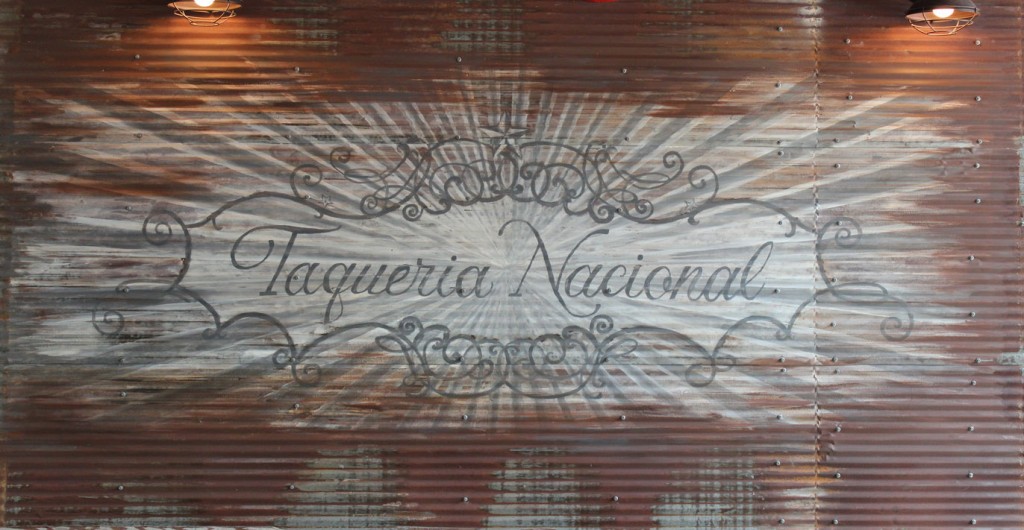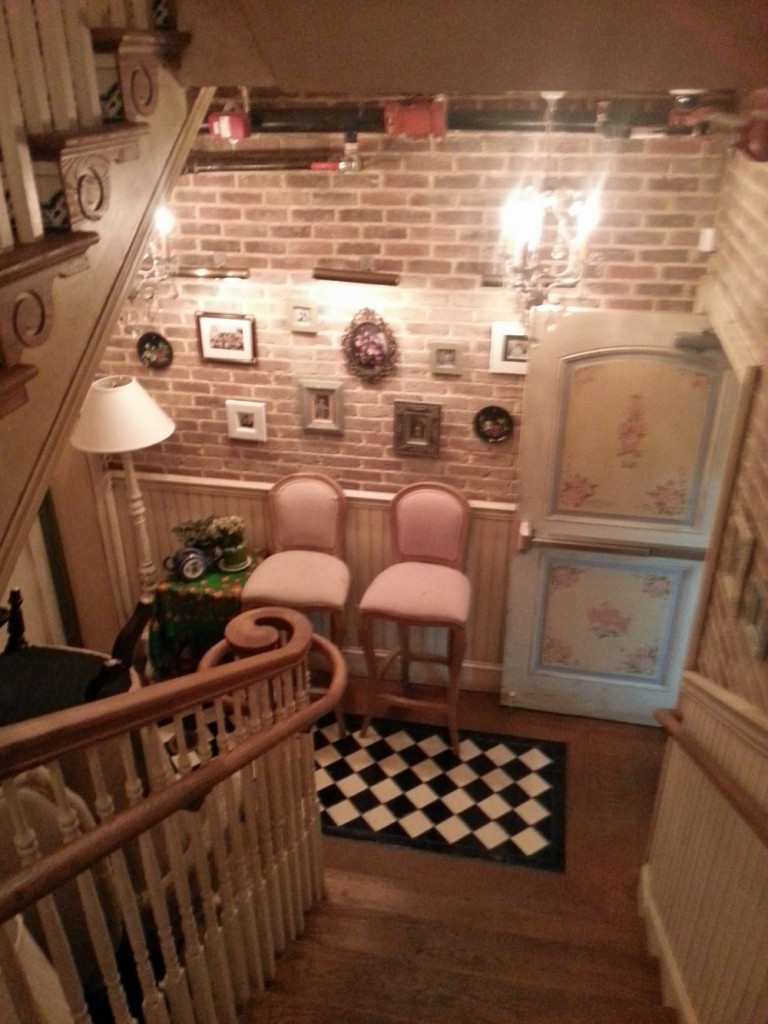Who said that using distressed finishes to transform restaurant walls was passé? Lately, to recreate a post-Russian revolution ambiance at the Mari Vanna restaurant in Washington DC and to implement a traditional Mexican décor in Taqueria Nacional, I executed unusual décors and faux finishes on walls, decorative woodwork, wall papers, bricks, chandeliers, and other objects. The result was exceedingly original, cordial, and fun. For the Mexican restaurant, over rusty corrugated metal sheets I reproduced an old “Taqueria” (taco eatery) design sign.
In Mexico, traditional store signs had popular designs with flowery calligraphy, curvaceous fonts, and vibrant colors to catch the customer’s eye. These signs, typical of the “arte populares”, are incredibly artistic and fresh looking compared to their rigid American or European equivalents. Here are two pictures showing the effect cast by such a sign and the ambiances set by the beautifully-executed distressed décor.
At Mari Vanna DC, The Russian restaurant interior was entirely distressed from floor to ceiling on three levels, including fixtures tiles, furniture and other objects, to emulate a former grand house chopped up into community apartments, as well as to bring a flair of a Babushka’s (Granny’s) apartment.
I started by ageing the ceilings and the cornices with a putty-colored glaze, indeed smoky or dirty looking.
The cornices were treated with gradient hues to underline the molded leaves and patterns of their design. On some of them up to four colors were used and featured a dash of bronze or gold.
The same treatment was applied to the rosettes. The bathrooms’ pine wainscots were stained with a grayish medium to imitate faded wood.
The stairway wainscot as well as every door, trim, bar and shelf were painted, partly sanded down to the wood, then stained.
Similarly, I tinted the wall papers with dry Sienna powder and burnt umber to reproduce the passing of time and mildew. To age the entire brick stairwell I used five different tints giving the bricks a dusty and faded look. At last, I faux finished the chandeliers and wall sconces to simulate antique ones. The faux finish work allied to the materials used all over the restaurant, such as old barn wood, tufted fabrics, flowery wall papers, 1950s original magazine clippings and newspapers pasted on the walls, contributed to creating a very warm, comfortable, and whimsical décor.
Once the faux finishing work was completed, Russian artists added finishing touches by painting traditional Russian folk designs on doors and furniture. This exceptional décor was conceived in every detail and led from start to finish by Moscow-based designer Gulia Ismagilova. The restaurant décor is so hearty that it definitely opens your appetite… for more faux finishes!











